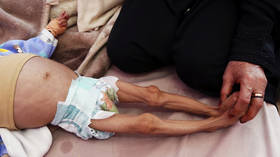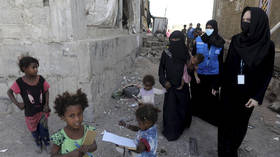161,000 face ‘catastrophic’ levels of hunger in Yemen

Five times as many Yemenis are likely to endure famine during the second half of 2022, marking a five-fold increase from the current rate, according to a report by 15 UN agencies and NGOs published on Monday.
The report claimed some 161,000 people were likely to experience “catastrophic levels of hunger,” while 19 million people would likely be unable to meet their minimum food needs during that period. The report continues on to warn that a shocking 2.2 million children could be severely malnourished by the end of the year, including over half a million who already have that condition. Some 1.3 million women are also at risk for malnutrition, it found.
Those figures show several increases over last year’s numbers, which claimed food rations were needed by 12.9 million, but that 3.3 million children and women needed special nutrition, along with 1.6 million schoolchildren. Another accounting of the humanitarian toll from 2021 suggested there were 11.3 million youths dependent on humanitarian assistance, 2.3 million toddlers “acutely malnourished” and 400,000 of those at “imminent risk of death.”
The statistics are compiled by the Integrated Food Security Phase Classification ahead of a yearly fundraising conference to be held at the UN later in the week. The group itself is funded by the EU, USAID, and UKAID.
The conflict in Yemen has dragged on for nearly a decade, fueled by arms and support the US, UK and their European partners have supplied to Saudi Arabia, which has been fighting to rout the Iran-backed Houthi rebels and restore the Saudi-backed government in Sana’a. Despite living in the poorest country in the Middle East, the Houthis have still managed to hold on to a significant amount of their territory.
Making matters worse, Yemen imports most of its food, including nearly a third from Ukraine, which is engulfed in its own conflict with Russia since last month, and has banned the export of wheat, oats, and other critical food staples, as well as agricultural exports. With food prices already at near-record high levels, the removal of both Ukraine and Russia from the global commodity markets does not bode well for those who usually depend on their wheat – a factor likely contributing as much as Saudi port blockades to the dire situation in Yemen.












